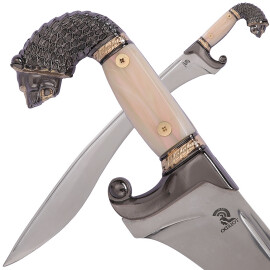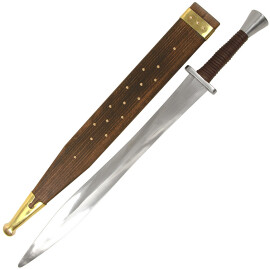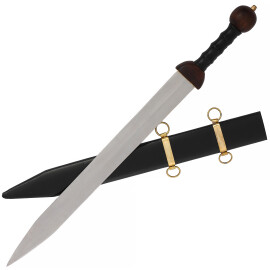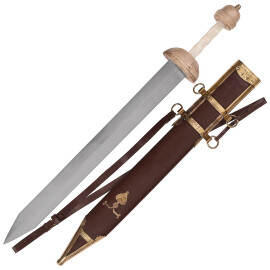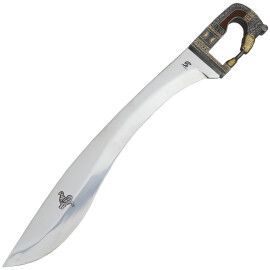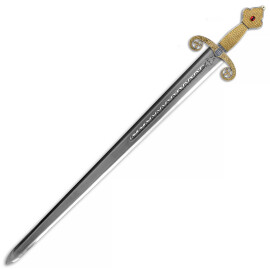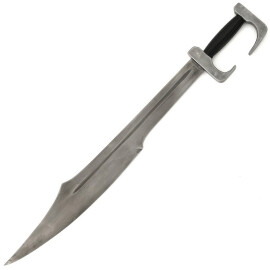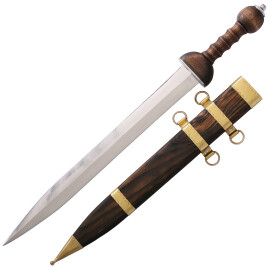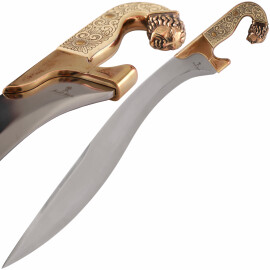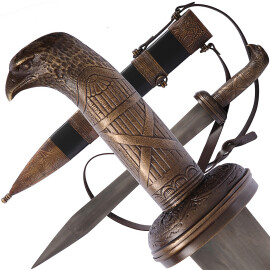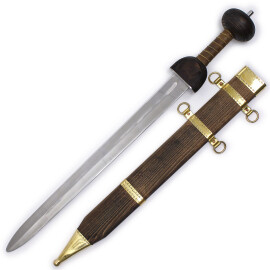Gladius and other antique swords
Narrow your Results
Falcata
The falcata is a type of sword typical of the pre-Roman Iberian Peninsula (modern Spain and Portugal), similar to the Turkish yatagan, Greek kopis or Nepalese kukri. The falcata-like swords were derived from the sickle-shape knives of the Iron Age; that too explains their ritual uses. It is thought that it was introduced in the Iberian Peninsula by the Celts who spread the iron technology. It seems that its origin is parallel to the Greek Kopis, and not derived from it.
Gladius
Gladius was the roman word for sword, and is used to represent the primary sword of Ancient Rome soldiers. Early ancient Roman swords were similar to those used by the Greeks. From the 3rd century BC, the Romans adopted swords similar to those used by the Celtiberians and others during the early part of the conquest of Hispania. This sword was known as the Gladius Hispaniensis, or "Hispanic Sword". It was thought that they were similar to the later Mainz types, but the evidence now suggests otherwise. Rather, these early blades followed a slightly different pattern, being longer and narrower, and were probably those that Polybius considered good for both cut and thrust. Later Gladii are referred to as the Mainz, Fulham, and Pompeii types. In the late Roman period, Publius Flavius Vegetius Renatus refers to swords called semispathae (or semispathia) and spathae, for both of which he appears to consider gladius an appropriate term.

